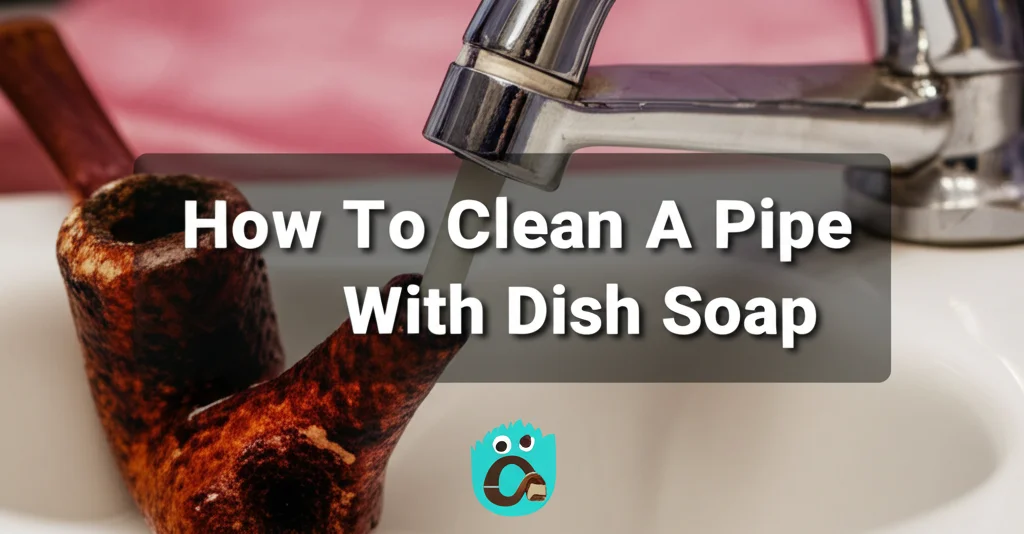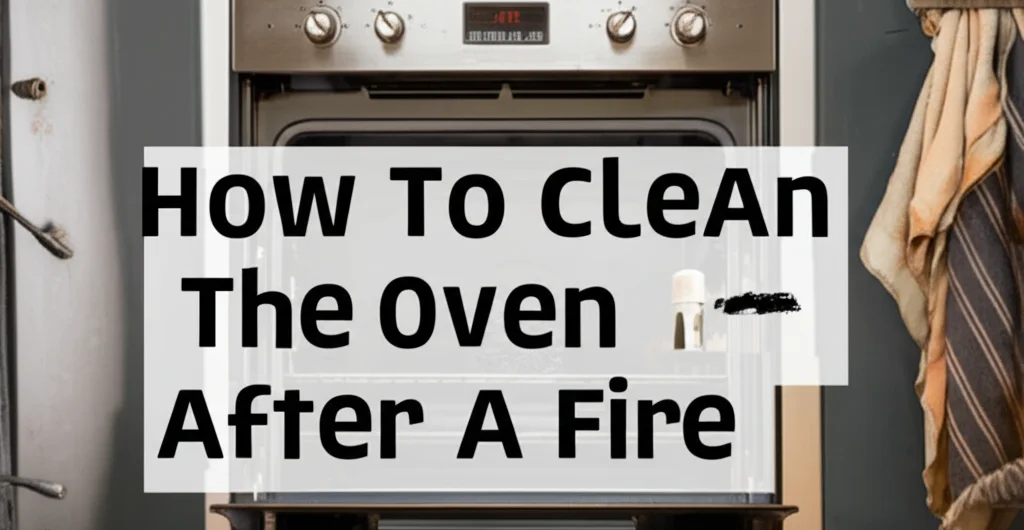· Home Cleaning · 7 min read
How To Clean A Pipe With Dish Soap

How To Clean A Pipe With Dish Soap
Ever noticed a slow drain or a funky smell coming from your pipes? Don’t immediately reach for harsh chemicals! Cleaning a pipe with dish soap is a surprisingly effective and eco-friendly solution. This article will walk you through how to use dish soap to clear minor clogs and freshen up your plumbing. We’ll cover everything from the science behind why it works to step-by-step instructions and preventative measures. Let’s get your pipes flowing freely again!
Takeaway:
- Dish soap can break down grease and grime.
- Hot water helps flush away loosened debris.
- This method is best for minor clogs and maintenance.
- Avoid using this method with chemical drain cleaners.
Can you clean a pipe with dish soap?
Yes, you can! Dish soap is excellent at cutting through grease and grime, common culprits behind slow drains. Combining it with hot water creates a solution that can loosen minor blockages and restore proper flow to your pipes.
Why Dish Soap Works for Pipe Cleaning
Dish soap isn’t just for sparkling dishes; it’s a surprisingly effective plumbing helper. The key lies in its chemical composition. Most dish soaps are surfactants, meaning they reduce the surface tension of water. This allows the water to penetrate and break down greasy buildup clinging to the pipe walls.
Think of grease as a stubborn layer resisting water flow. Dish soap acts like a bridge, allowing the water to mix with the grease and carry it away. It’s a gentle yet powerful approach, especially when compared to harsh chemical drain cleaners that can damage your pipes over time. Using dish soap is a safe and affordable way to maintain your plumbing system.
Gathering Your Supplies
Before you start, let’s make sure you have everything you need. This method is all about simplicity, so the supply list is short and sweet. You likely already have everything on hand!
- Dish Soap: Any liquid dish soap will work, but a grease-cutting formula is ideal.
- Hot Water: The hotter, the better (but not boiling – see safety precautions below).
- Rubber Gloves (Optional): To protect your hands.
- Bucket (Optional): To catch any overflow.
- Plunger (Optional): For stubborn clogs.
Having these items ready will make the process smooth and efficient. Remember, preparation is key to a successful cleaning experience.
Step-by-Step Guide: Cleaning Your Pipe
Now for the main event! Here’s how to clean your pipe with dish soap, step-by-step:
- Remove Standing Water: If there’s standing water in the sink or tub, try to remove as much as possible. This allows the dish soap solution to work directly on the clog.
- Pour in the Dish Soap: Squirt a generous amount of dish soap – about ¼ to ½ cup – down the drain. The amount depends on the size of the drain and the severity of the clog.
- Add Hot Water: Carefully pour a pot of hot (but not boiling!) water down the drain. The hot water helps activate the dish soap and flush away the loosened debris.
- Let it Sit: Allow the solution to sit for at least 20-30 minutes. This gives the dish soap time to break down the grease and grime. For tougher clogs, you can let it sit overnight.
- Flush with Hot Water: After the waiting period, flush the drain with plenty of hot water. Run the water for several minutes to ensure everything is cleared.
- Repeat if Necessary: If the drain is still slow, repeat the process. Sometimes, multiple applications are needed for stubborn clogs.
- Plunge if Needed: If the dish soap and hot water aren’t enough, try using a plunger after the soaking period. This can help dislodge the clog and restore proper flow.
Dealing with Stubborn Clogs
Sometimes, dish soap and hot water aren’t enough to tackle a particularly stubborn clog. Don’t worry; there are a few things you can try before calling a plumber.
- Baking Soda and Vinegar: Pour ½ cup of baking soda down the drain, followed by 1 cup of vinegar. Let it fizz for 30 minutes, then flush with hot water. This creates a natural chemical reaction that can break down clogs. You can find more information on https://www.beacleaner.com/how-to-remove-baking-soda-residue-from-carpet/ about dealing with residue.
- Wire Hanger: Carefully straighten a wire hanger and use it to gently probe the drain. Be careful not to push the clog further down.
- Wet/Dry Vacuum: A wet/dry vacuum can sometimes suck out the clog. Make sure to seal the vacuum hose tightly around the drain opening.
- Consider a Drain Snake: For more serious blockages, a drain snake (also known as an auger) can be a lifesaver.
Safety Precautions to Keep in Mind
While dish soap is a relatively safe cleaning agent, it’s important to take a few precautions:
- Avoid Boiling Water: Boiling water can damage PVC pipes. Use hot tap water instead.
- Never Mix with Chemical Drain Cleaners: Combining dish soap with chemical drain cleaners can create dangerous fumes. If you’ve recently used a chemical drain cleaner, wait at least 24 hours before using dish soap.
- Protect Your Eyes: Wear eye protection if you’re concerned about splashes.
- Ventilate the Area: Ensure the area is well-ventilated, especially if you’re using hot water.
- Be Careful with Plunging: If you have a toilet, ensure the plunger creates a good seal to avoid splashing.
Preventing Future Clogs
Prevention is always better than cure! Here are a few tips to help prevent future clogs:
- Strain Your Drains: Use drain strainers in sinks and tubs to catch hair, food scraps, and other debris.
- Flush with Hot Water Regularly: Periodically flush your drains with hot water to help prevent buildup.
- Avoid Pouring Grease Down the Drain: This is the biggest culprit behind clogged pipes. Dispose of grease in a separate container.
- Regular Maintenance: Pour a cup of baking soda followed by a cup of vinegar down your drains monthly to keep them fresh and clear.
- Consider your flooring: If you’re dealing with flooring issues, you might want to check out https://www.beacleaner.com/how-to-clean-vinyl-plank-flooring/ for related cleaning tips.
Frequently Asked Questions (FAQs)
Q: Will dish soap damage my pipes?
A: Generally, no. Dish soap is a mild cleaning agent and is unlikely to damage most types of pipes. However, avoid using boiling water, as this can damage PVC pipes.
Q: How long should I let the dish soap sit?
A: At least 20-30 minutes. For stubborn clogs, you can let it sit overnight for maximum effectiveness.
Q: Can I use any type of dish soap?
A: Yes, any liquid dish soap will work. However, a grease-cutting formula is ideal for breaking down stubborn clogs.
Q: What if the clog is really bad?
A: If dish soap and hot water don’t work, try using a plunger, baking soda and vinegar, or a drain snake. If the clog persists, it’s best to call a professional plumber.
Q: Is this method safe for all types of drains?
A: Yes, this method is generally safe for most drains, including kitchen sinks, bathroom sinks, and tubs. However, avoid using it on drains that have recently been treated with chemical drain cleaners.
Conclusion
Cleaning a pipe with dish soap is a simple, safe, and effective way to tackle minor clogs and maintain your plumbing system. It’s a great alternative to harsh chemical drain cleaners that can damage your pipes and harm the environment. By following the steps outlined in this guide and practicing preventative measures, you can keep your pipes flowing freely for years to come. Remember, a little dish soap and hot water can go a long way! If you’re looking for more cleaning solutions, consider checking out https://www.beacleaner.com/how-to-clean-hardwood-floors-with-vinegar/ for additional tips. Don’t hesitate to call a plumber if you encounter a persistent or complex clog.




